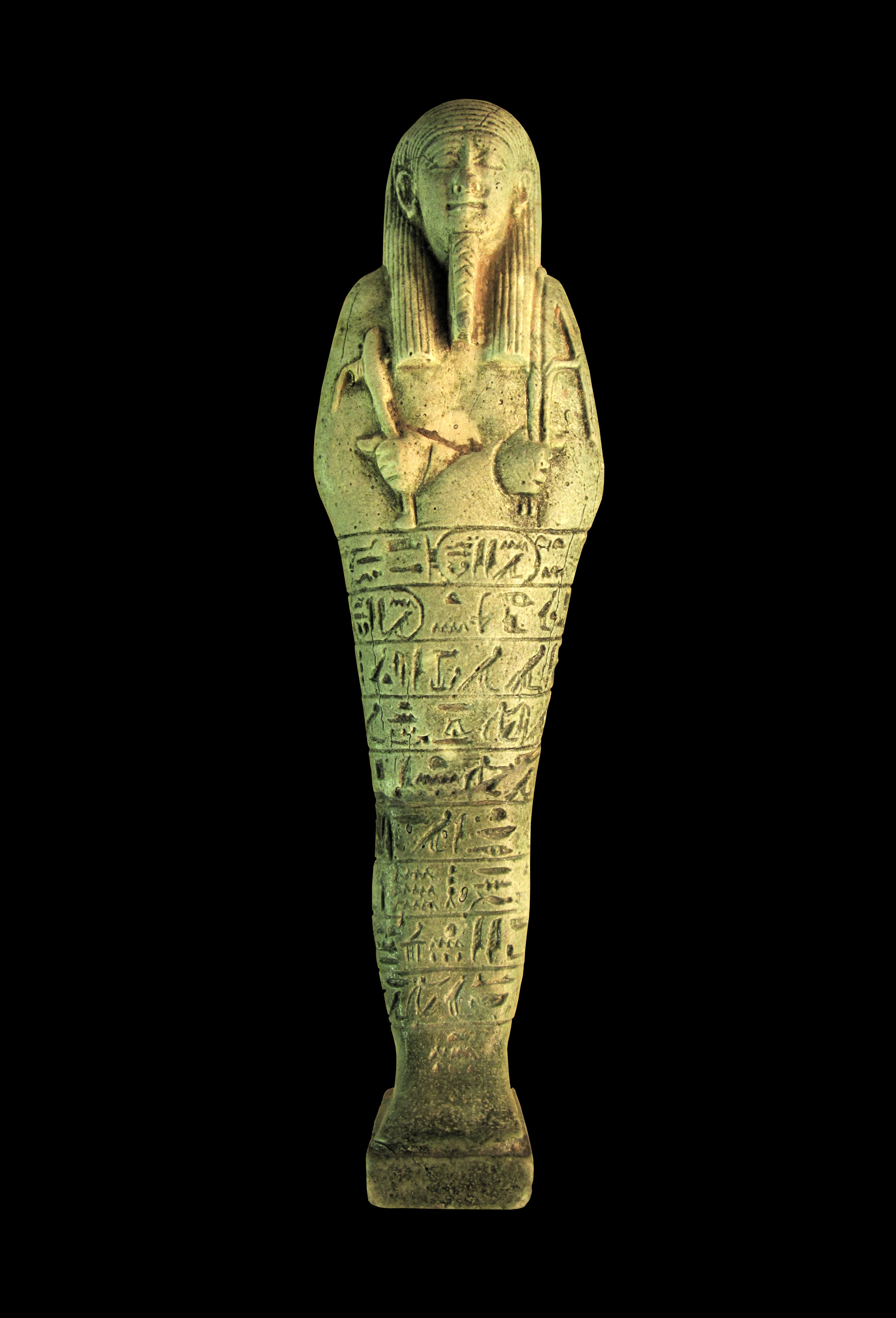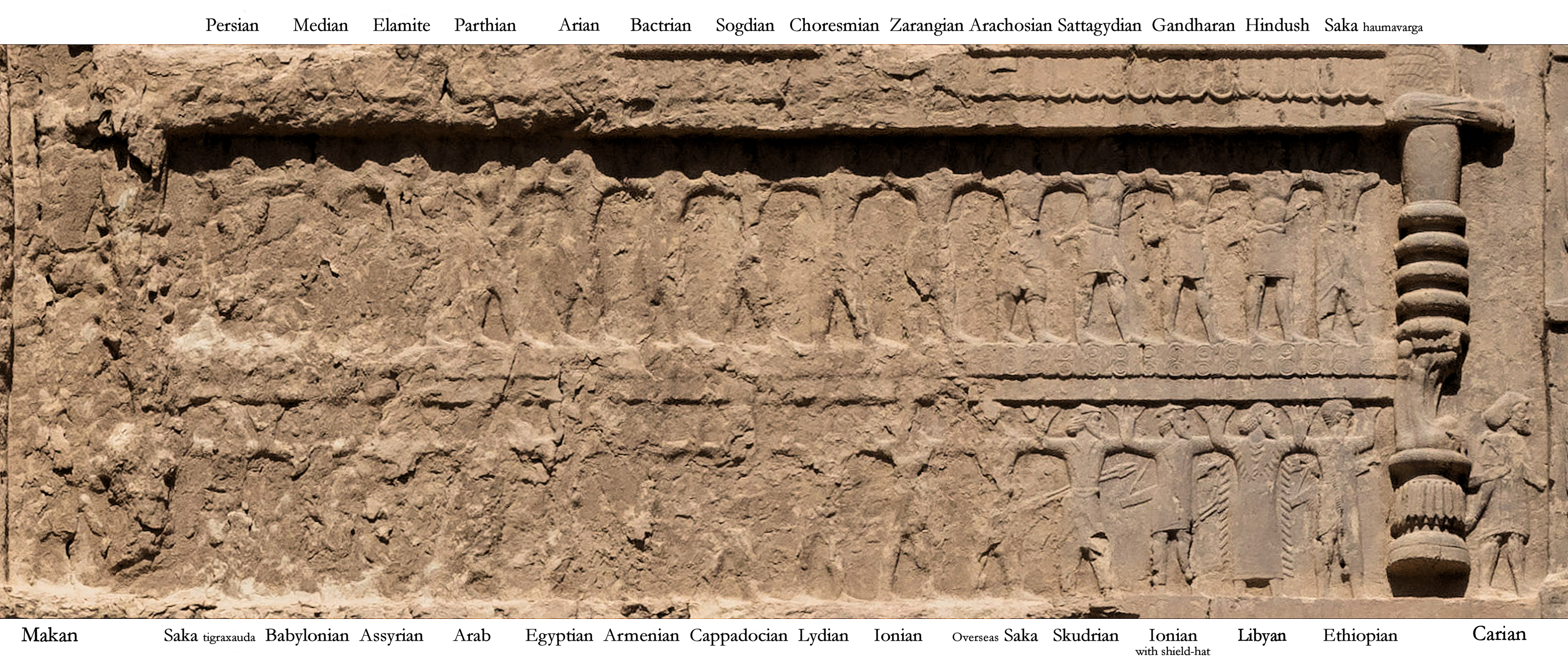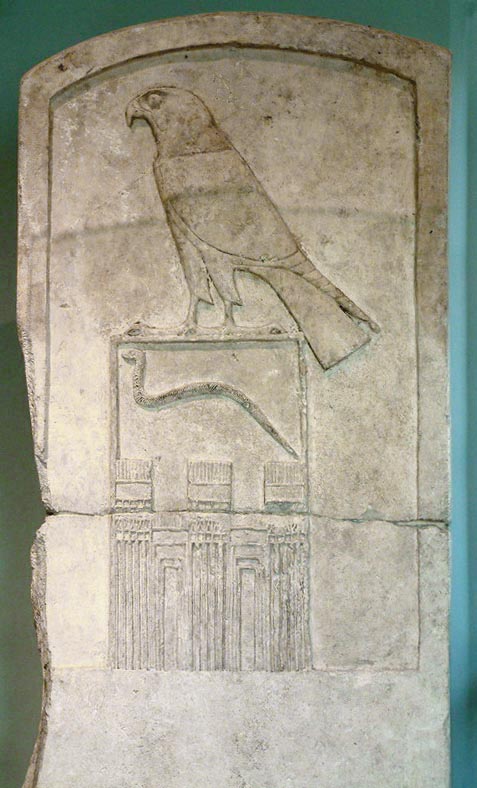|
Amyrtaeus
Amyrtaeus ( , a Hellenization of the original Egyptian name Amenirdisu) of Sais, is the only pharaoh of the Twenty-eighth Dynasty of EgyptCimmino 2003, p. 385. and is thought to be related to the royal family of the Twenty-sixth Dynasty (664–525 BC). He ended the first Persian occupation of Egypt (i.e. the Twenty-seventh Dynasty: 525–404 BC) and reigned from 404 BC to 399 BC.Clayton 1999, p. 202. Amyrtaeus' successful insurrection inaugurated Egypt's last significant phase of independence under native sovereigns, which lasted for about 60 years until the Persians conquered the country again. Biography Sources and identity Sextus Julius Africanus (''Chronographiai'') calls him "Amyrteos", while Eusebius of Caesarea ('' Chronicon'') calls him "Amirtaios" — both of them recording that he reigned for 6 years. An ancient Egyptian prophetic text, the ''Demotic Chronicle'' (3rd/2nd century BC), states: Amyrtaeus was probably the grandson of the Amyrtaeus of Sais who, ... [...More Info...] [...Related Items...] OR: [Wikipedia] [Google] [Baidu] |
Twenty-eighth Dynasty Of Egypt
The Twenty-eighth Dynasty of Egypt (notated Dynasty XXVIII, alternatively 28th Dynasty or Dynasty 28) is usually classified as the third dynasty of the Ancient Egyptian Late Period. The 28th Dynasty lasted from 404 BC to 398 BC and it includes only one Pharaoh, Amyrtaeus (Amenirdis), also known as Psamtik V or Psammetichus V. Amyrtaeus was probably the grandson of the Amyrtaeus of Sais, who carried on a rebellion in 465–463 BC with the Egyptian chief, Inarus (himself a grandson of Psamtik III), against the satrap Achaemenes of Achaemenid Egypt. History As early as 411 BC, Amyrtaeus, a native Egyptian, revolted against Darius II, the Achaemenid Persian King and the last Pharaoh of the 27th Dynasty. Amyrtaeus succeeded in expelling the Persians from Memphis in 405 BC with assistance from Cretan mercenaries, and in 404 BC, following the death of Darius, proclaimed himself Pharaoh of Egypt. Although Artaxerxes II, Darius' successor as King of Persia attempted to lead an expe ... [...More Info...] [...Related Items...] OR: [Wikipedia] [Google] [Baidu] |
Twenty-seventh Dynasty Of Egypt
The Twenty-seventh Dynasty of Egypt (notated Dynasty XXVII, alternatively 27th Dynasty or Dynasty 27), also known as the First Egyptian Satrapy (), was effectively a province ( Satrapy) of the Achaemenid Persian Empire between 525 BC and 404 BC. It was founded by Cambyses II, the King of Persia, after the Battle of Pelusium (525 BC) and the Achaemenid conquest of Egypt, and his subsequent crowning as Pharaoh of Egypt. It was disestablished upon the rebellion and crowning of Amyrtaeus as Pharaoh. A second period of Achaemenid rule in Egypt occurred under the Thirty-first Dynasty of Egypt (343–332 BC). History The last pharaoh of the 26th Dynasty, Psamtik III, was defeated by Cambyses II at the battle of Pelusium in the eastern Nile delta in May of 525 BC. Cambyses was crowned Pharaoh of Egypt in the summer of that year at the latest, beginning the first period of Persian rule over Egypt (known as the 27th Dynasty). Egypt was then joined with Cyprus and Pho ... [...More Info...] [...Related Items...] OR: [Wikipedia] [Google] [Baidu] |
Nepherites I
Nefaarud I or Nayfaurud I, better known with his hellenised name Nepherites I, was an ancient Egyptian pharaoh, the founder of the 29th Dynasty in 399 BC. Reign Accession It is believed that Nepherites was a general from the deltaic city of Mendes who, in the autumn of 399 BC, rose against pharaoh Amyrtaeus, defeated him in open battle, and then executed him at Memphis. Nepherites then crowned himself pharaoh at Memphis and possibly also at Sais, before shifting the capital from Sais to his hometown Mendes. The fact that Nepherites I chose the same Horus name of Psamtik I and the Golden Horus name of Amasis II – both relevant rulers of the earlier 26th Dynasty - is thought to demonstrate that he wanted to associate his rule with an earlier 'golden age' of Egyptian history. Activities According to Manetho, Nepherites I ruled for six years, although his highest archaeologically attested date is his regnal year 4. Evidence of Nepherites' building work has been found in a number ... [...More Info...] [...Related Items...] OR: [Wikipedia] [Google] [Baidu] |
Darius II
Darius II ( peo, 𐎭𐎠𐎼𐎹𐎺𐎢𐏁 ; grc-gre, Δαρεῖος ), also known by his given name Ochus ( ), was King of Kings of the Achaemenid Empire from 423 BC to 405 or 404 BC. Artaxerxes I, who died in 424 BC, was followed by his son Xerxes II. After a month and half Xerxes II was murdered by his brother Sogdianus. His illegitimate brother, Ochus, satrap of Hyrcania, rebelled against Sogdianus, and after a short fight killed him, and suppressed by treachery the attempt of his own brother Arsites to imitate his example. Ochus adopted the name Darius (Greek sources often call him Darius ''Nothos'', "Bastard"). Neither the names Xerxes II nor Sogdianus occur in the dates of the numerous Babylonian tablets from Nippur; here effectively the reign of Darius II follows immediately after that of Artaxerxes I. Historians know little about Darius II's reign. A rebellion by the Medes in 409 BC is mentioned by Xenophon. It does seem that Darius II was quite dependent ... [...More Info...] [...Related Items...] OR: [Wikipedia] [Google] [Baidu] |
Inaros II
Inaros (II), also known as Inarus, (fl. ca. 460 BC) was an Egyptian rebel ruler who was the son of an Egyptian prince named Psamtik, presumably of the old Saite line, and grandson of Psamtik III. In 460 BC, he revolted against the Persians with the help of his Athenian allies under Admiral Charitimides, and defeated the Persian army commanded by satrap Achaemenes. The Persians retreated to Memphis, but the Athenians were finally defeated in 454 BC by the Persian army led by Megabyzus, satrap of Syria, and Artabazus, satrap of Phrygia, after a two-year siege. Inaros was captured and carried away to Susa where he was reportedly crucified in 454 BC. Revolt and aftermath He held a kingship over the Libyans from Mareia (above Pharos) and the part of the Nile Delta around Sais. With help from Amyrtaeus, also from Sais, who took the northern marshes, Inarus drove out the tax-collectors while collecting mercenaries. These actions started a revolt in Egypt at the beginning of the r ... [...More Info...] [...Related Items...] OR: [Wikipedia] [Google] [Baidu] |
Aramaic
The Aramaic languages, short Aramaic ( syc, ܐܪܡܝܐ, Arāmāyā; oar, 𐤀𐤓𐤌𐤉𐤀; arc, 𐡀𐡓𐡌𐡉𐡀; tmr, אֲרָמִית), are a language family containing many varieties (languages and dialects) that originated in the ancient region of Syria. For over three thousand years, It is a sub-group of the Semitic languages. Aramaic varieties served as a language of public life and administration of ancient kingdoms and empires and also as a language of divine worship and religious study. Several modern varieties, namely the Neo-Aramaic languages, are still spoken in the present-day. The Aramaic languages belong to the Northwest group of the Semitic language family, which also includes the Canaanite languages such as Hebrew, Edomite, Moabite, and Phoenician, as well as Amorite and Ugaritic. Aramaic languages are written in the Aramaic alphabet, a descendant of the Phoenician alphabet, and the most prominent alphabet variant is the Syriac alphabet. ... [...More Info...] [...Related Items...] OR: [Wikipedia] [Google] [Baidu] |
Satrap
A satrap () was a governor of the provinces of the ancient Median and Achaemenid Empires and in several of their successors, such as in the Sasanian Empire and the Hellenistic empires. The satrap served as viceroy to the king, though with considerable autonomy. The word came to suggest tyranny or ostentatious splendour, and in modern usage refers to any subordinate or local ruler, usually with unfavourable connotations of corruption. A satrapy is the territory governed by a satrap. Etymology The word is derived via Latin from Greek ''satrápes'' (), itself borrowed from an Old Iranian ''*khshathra-pa''. In Old Persian, which was the native language of the Achaemenids, it is recorded as ''khshathapavan'' (, literally "protector of the province"). The Median form is reconstructed as ''*khshathrapavan-''. It is cognate with Sanskrit ''kshetrapal'' (). The Biblical Hebrew form is ''aḥashdarpan'' , as found in . In the Parthian (language of the Arsacid Empire) and Middl ... [...More Info...] [...Related Items...] OR: [Wikipedia] [Google] [Baidu] |
Artaxerxes I
Artaxerxes I (, peo, 𐎠𐎼𐎫𐎧𐏁𐏂𐎠 ; grc-gre, Ἀρταξέρξης) was the fifth King of Kings of the Achaemenid Empire, from 465 to December 424 BC. He was the third son of Xerxes I. He may have been the " Artasyrus" mentioned by Herodotus as being a satrap of the royal satrapy of Bactria. In Greek sources he is also surnamed "long-handed" ( grc, μακρόχειρ ''Makrókheir''; la, Longimanus), allegedly because his right hand was longer than his left. Succession to the throne Artaxerxes was probably born in the reign of his grandfather Darius I, to the emperor's son and heir, Xerxes I. In 465 BC, Xerxes I was murdered by ''Hazarapat'' ("commander of thousand") Artabanus, the commander of the royal bodyguard and the most powerful official in the Persian court, with the help of a eunuch, Aspamitres. Greek historians give contradicting accounts of events. According to Ctesias (in ''Persica'' 20), Artabanus then accused Crown Prince Dari ... [...More Info...] [...Related Items...] OR: [Wikipedia] [Google] [Baidu] |
Aramaic Language
The Aramaic languages, short Aramaic ( syc, ܐܪܡܝܐ, Arāmāyā; oar, 𐤀𐤓𐤌𐤉𐤀; arc, 𐡀𐡓𐡌𐡉𐡀; tmr, אֲרָמִית), are a language family containing many varieties (languages and dialects) that originated in the ancient region of Syria. For over three thousand years, It is a sub-group of the Semitic languages. Aramaic varieties served as a language of public life and administration of ancient kingdoms and empires and also as a language of divine worship and religious study. Several modern varieties, namely the Neo-Aramaic languages, are still spoken in the present-day. The Aramaic languages belong to the Northwest group of the Semitic language family, which also includes the Canaanite languages such as Hebrew, Edomite, Moabite, and Phoenician, as well as Amorite and Ugaritic. Aramaic languages are written in the Aramaic alphabet, a descendant of the Phoenician alphabet, and the most prominent alphabet variant is the Syriac alphabet. The ... [...More Info...] [...Related Items...] OR: [Wikipedia] [Google] [Baidu] |
Ancient Greek Language
Ancient Greek includes the forms of the Greek language used in ancient Greece and the ancient world from around 1500 BC to 300 BC. It is often roughly divided into the following periods: Mycenaean Greek (), Dark Ages (), the Archaic period (), and the Classical period (). Ancient Greek was the language of Homer and of fifth-century Athenian historians, playwrights, and philosophers. It has contributed many words to English vocabulary and has been a standard subject of study in educational institutions of the Western world since the Renaissance. This article primarily contains information about the Epic and Classical periods of the language. From the Hellenistic period (), Ancient Greek was followed by Koine Greek, which is regarded as a separate historical stage, although its earliest form closely resembles Attic Greek and its latest form approaches Medieval Greek. There were several regional dialects of Ancient Greek, of which Attic Greek developed into Koine ... [...More Info...] [...Related Items...] OR: [Wikipedia] [Google] [Baidu] |
Ancient Egyptian Royal Titulary
The royal titulary or royal protocol is the standard naming convention taken by the pharaohs of ancient Egypt. It symbolised worldly power and holy might, also acting as a sort of mission statement for the duration of a monarch's reign (although sometimes it even changed during the reign). The full titulary, consisting of five names, did not come into standard usage until the Middle Kingdom but remained in use as late as the Roman Empire. Origins In order that the pharaoh, who held divine office, could be linked to the people and the gods, special epithets were created for them at their accession to the throne. These titles also served to demonstrate one's qualities and link them to the terrestrial realm. The five names were developed over the centuries beginning with the Horus name. This name identified the figure as a representative of the god Horus. The Nebty name was the second part of the royal titular of Upper and Lower Egypt. This name placed the king under the protecti ... [...More Info...] [...Related Items...] OR: [Wikipedia] [Google] [Baidu] |
Demotic (Egyptian)
Demotic (from grc, δημοτικός ''dēmotikós'', 'popular') is the ancient Egyptian script derived from northern forms of hieratic used in the Nile Delta, and the stage of the Egyptian language written in this script, following Late Egyptian and preceding Coptic. The term was first used by the Greek historian Herodotus to distinguish it from hieratic and hieroglyphic scripts. By convention, the word "Demotic" is capitalized in order to distinguish it from demotic Greek. Script The Demotic script was referred to by the Egyptians as ', "document writing," which the second-century scholar Clement of Alexandria called , "letter-writing," while early Western scholars, notably Thomas Young, formerly referred to it as " Enchorial Egyptian." The script was used for more than a thousand years, and during that time a number of developmental stages occurred. It is written and read from right to left, while earlier hieroglyphs could be written from top to bottom, left to right, or ... [...More Info...] [...Related Items...] OR: [Wikipedia] [Google] [Baidu] |







